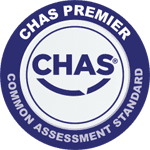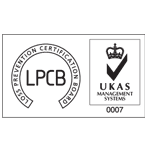UK Fire Safety Regulations
At iMist™, we specialise in innovative fire protection systems prioritising safety and efficiency for our customers. Our market-leading water mist technology is designed to provide high-pressure water mist fire suppression, while minimising water damage, making it ideal for domestic and residential applications.
What is the main fire safety legislation in the UK?
Fire Safety Law
In the United Kingdom, fire safety is governed by the Regulatory Reform (Fire Safety) Order 2005, commonly referred to as the RRO or FSO. This legislation took effect on 1 October 2006 and replaced various older fire safety laws, consolidating them into a single comprehensive piece of legislation. The RRO applies to all non-domestic premises and the common parts of multi-occupied residential buildings.
Key Requirements
- Responsible Person: The RRO designates a “responsible person” (usually the employer, owner, or occupier) who is accountable for ensuring fire safety within the premises.
- Fire Risk Assessment: The responsible person must conduct a thorough fire risk assessment, identifying potential hazards and assessing the risks. This assessment should be regularly reviewed and updated.
- Fire Safety Measures: Based on the risk assessment, appropriate fire safety measures must be implemented. These include fire detection and warning systems, firefighting equipment, safe evacuation routes, emergency lighting, and fire safety training.
For more information, visit https://stagingweb.imist.com/fire-safety-guidance-1-october-23/.

What Does UK Fire Safety Mean for Me?
How does fire safety differ around the UK?
England
In England, the RRO is enforced by local fire and rescue authorities. They conduct inspections and have the authority to issue enforcement notices or prosecute for non-compliance. The focus is on a risk-based approach, requiring responsible persons to take proactive steps to manage fire risks.
Scotland
In Scotland, fire safety is governed by the Fire (Scotland) Act 2005 and the associated Fire Safety (Scotland) Regulations 2006. These laws are similar to the RRO but have some differences in terminology and procedural requirements. The Scottish Fire and Rescue Service is responsible for enforcement and offers guidance and support to help ensure compliance.
Wales
Fire safety in Wales is also governed by the RRO, with local fire and rescue authorities responsible for enforcement. However, Wales has its own devolved government, which means there can be specific guidance or initiatives tailored to Welsh needs. For instance, the Welsh Government has introduced specific fire safety guidance for residential care homes and social housing.




























